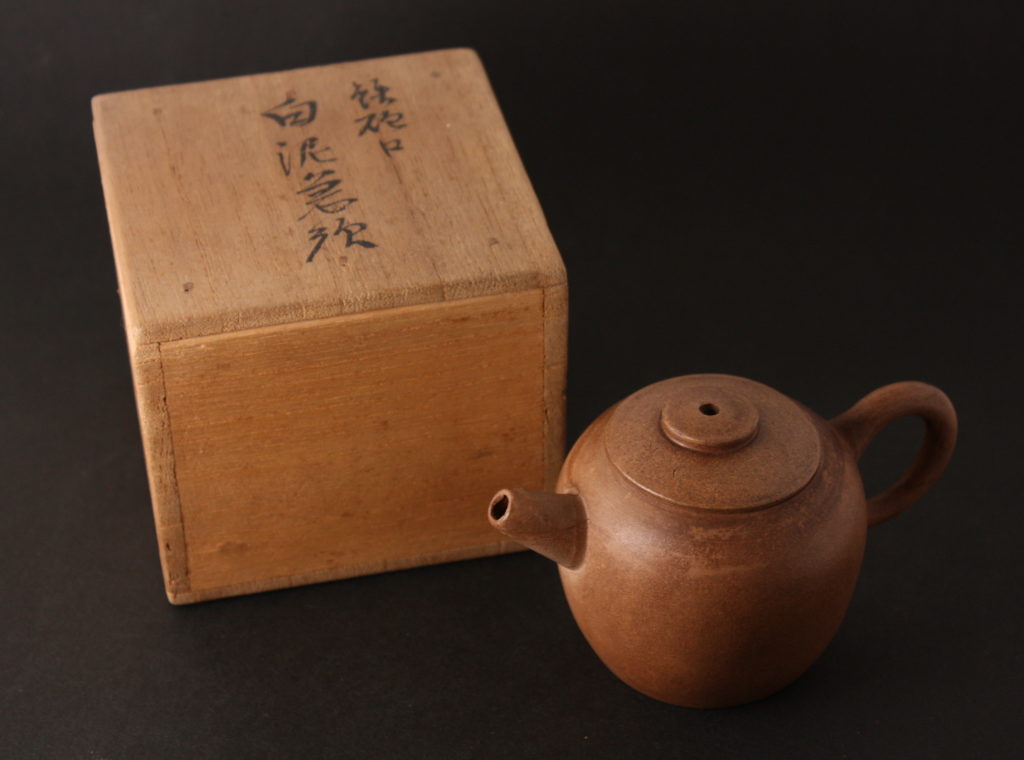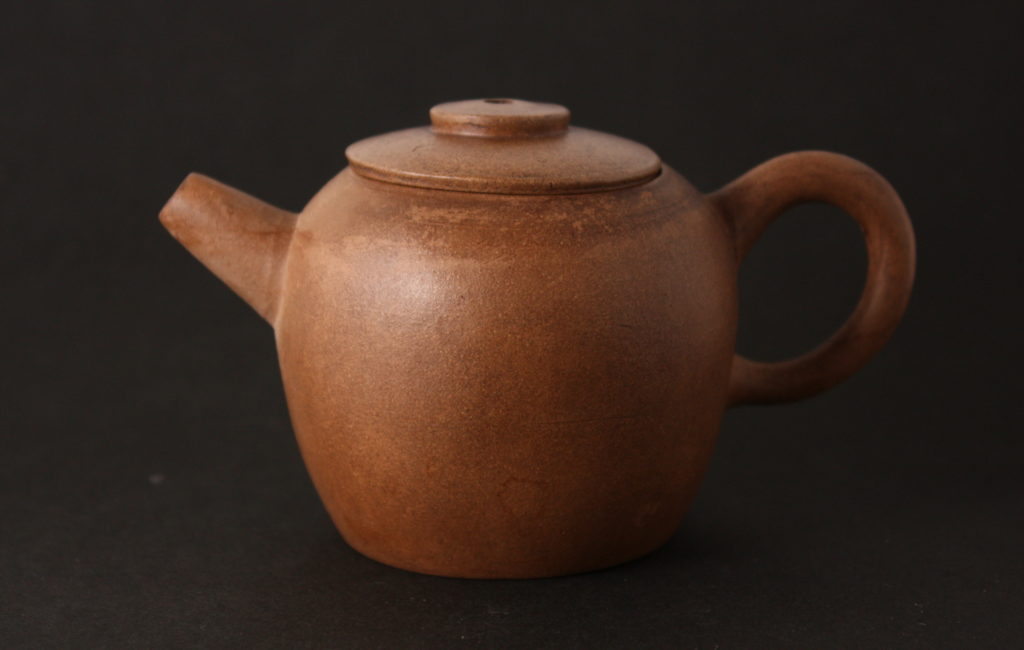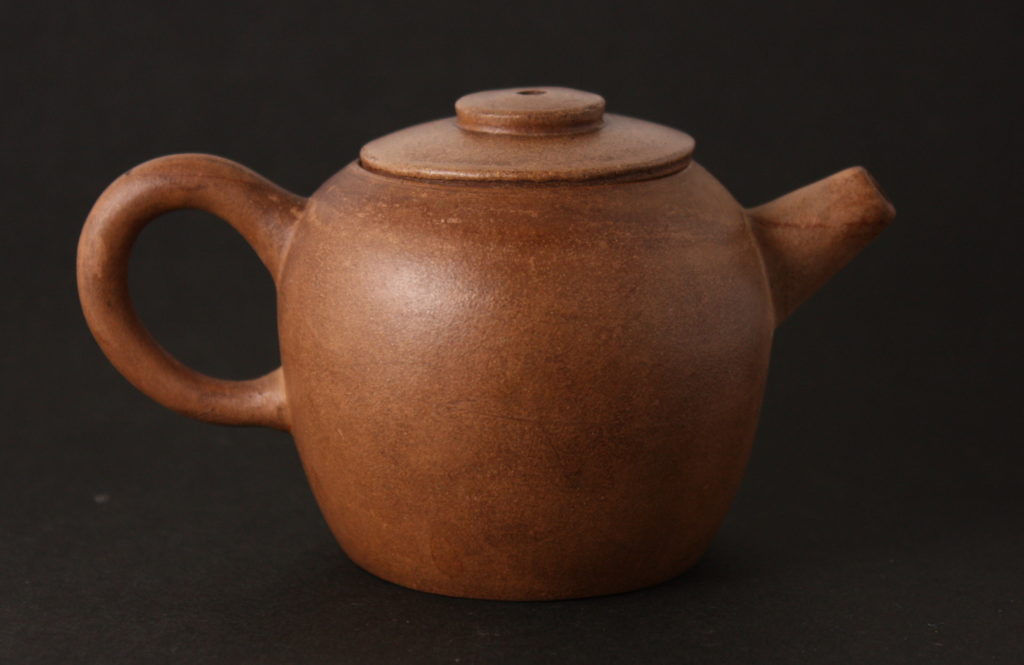Seals can have some pretty creative types that make them hard to read. This one is one such case. It’s hard to make out what the seal says, so my best guess is chenxi, but it could really be other things. EDIT: Someone who knows this stuff better than I do claims it’s changxi. To call this lid loose is being generous – it’s practically falling off. It comes in a nice wooden box. The words on it says “cannon spout” “white clay kyusu”. The box is from Japan but the pot I believe is a yixing. 135ml.
I took you at your suggestion and have been reading some of your old post-Covid posts. I haven’t been to…






 RSS - Posts
RSS - Posts
4 responses so far ↓
Hector Konomi // August 10, 2016 at 10:25 pm |
Seems well used
steanze // August 11, 2016 at 12:59 am |
Nice Ju lun zhu. Looks like a late Qing duanni of the brownish type. I like the slight asymmetries at the base of this kind of pots. It looks like there is a horizontal line in the patina, as if the pot had been immersed in tea nearly to the top of the handle and spout – maybe it was used in a teabot like this: http://farm9.staticflickr.com/8115/8709018818_6a6855329c_z.jpg
Serg // August 11, 2016 at 9:36 pm |
Great series of posts, pure Yixing beauty! Marshall, would you be so kind to tell us more about how you use the pots? What tea you brew, how does the pot affect flavor and fragrance, etc.?
MarshalN // August 15, 2016 at 3:28 am |
Hah, I’d have to have a teashop and ten people brewing nonstop to use all the teapots properly. I only use about a dozen to two pots regularly. The rest… I try to clean them and use them as I find time, but it’s not easy. A lot of pots come smelling like old socks. Some require multiple cleanings to get them in a usable state. It takes a lot of time.
I’ve written about using pots before. Basically, they don’t affect the tea nearly as much as most people think, and physical attributes (size, shape, pour speed, etc) are much more important than things like clay.